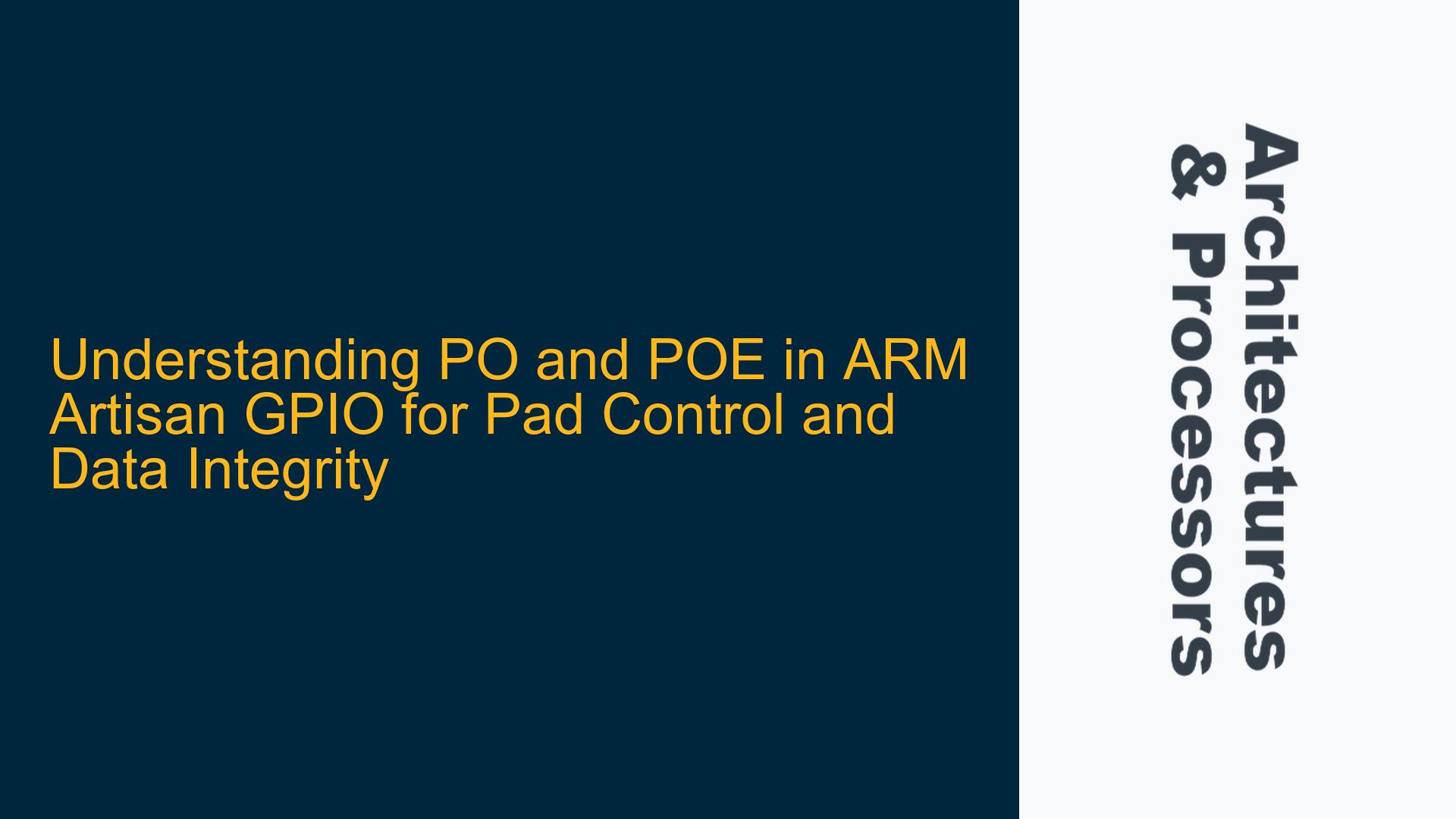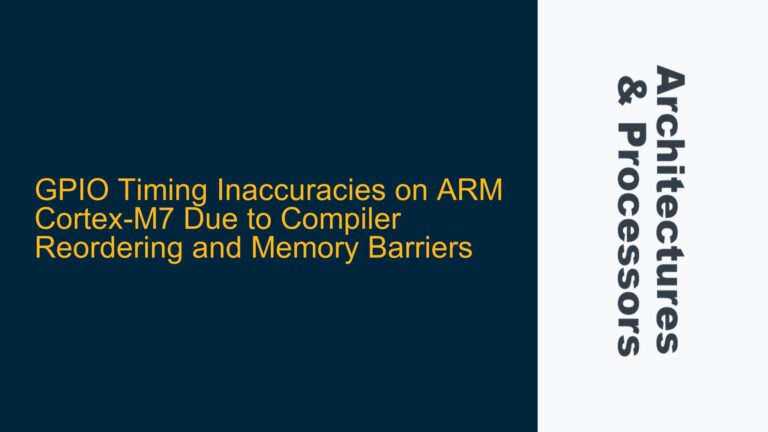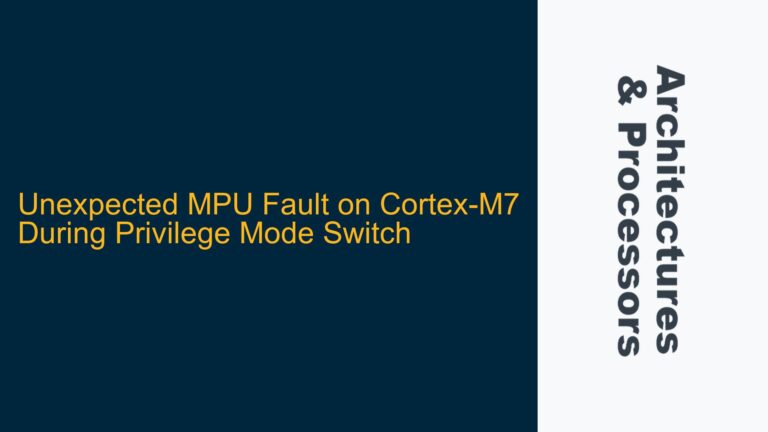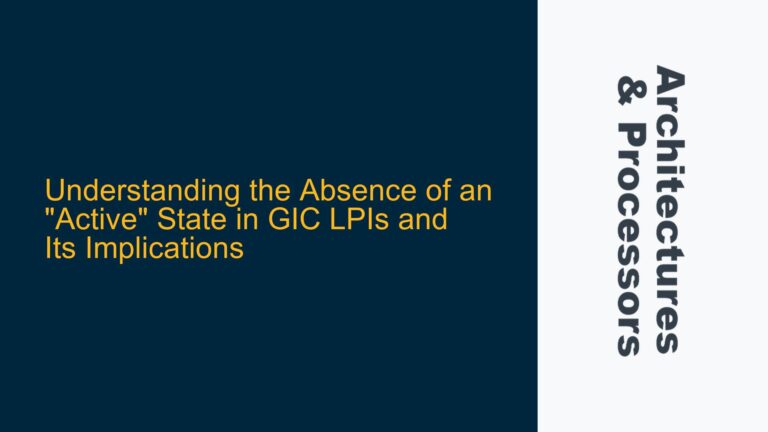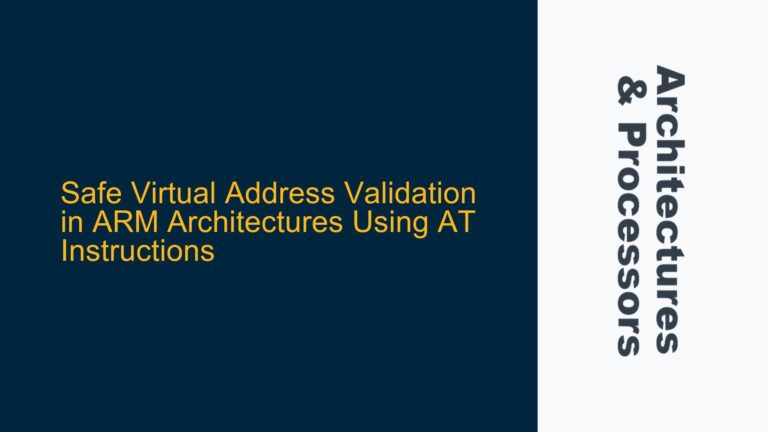ARM Artisan GPIO PO and POE Signal Functionality
The ARM Artisan GPIO library provides two critical signals for pad control and data integrity: PO (Parametric Output) and POE (Parametric Output Enable). These signals are essential for managing the interface between the pad and the core logic, ensuring that data is correctly transmitted and received while maintaining electrical integrity. PO is responsible for transmitting parametric inverted data from the pad to the core logic, while POE controls the enable logic for PO. When POE is logic-LOW, PO is forced high, effectively disabling the output. When POE is logic-HIGH, the parametric inverted data at PO is enabled, allowing the data to propagate to the core logic.
The PO signal is particularly important in scenarios where the pad is required to drive data to the core logic with specific electrical characteristics. The parametric inversion ensures that the data meets the required timing and voltage levels, which is critical for maintaining signal integrity in high-speed designs. POE, on the other hand, acts as a gatekeeper, ensuring that the data is only transmitted when the system is ready to receive it. This is especially important in power-sensitive designs, where unnecessary data transmission can lead to increased power consumption.
Understanding the interaction between PO and POE is crucial for designing robust GPIO interfaces. The PO signal must be carefully timed to ensure that the data is valid when it reaches the core logic, while POE must be controlled to prevent data corruption during power-up or power-down sequences. Additionally, the electrical characteristics of the pad must be considered when designing the PO and POE signals, as these can affect the overall performance of the GPIO interface.
Potential Misconfigurations and Electrical Integrity Issues
One of the primary challenges in implementing PO and POE signals is ensuring that they are correctly configured to meet the electrical and timing requirements of the system. Misconfigurations can lead to a range of issues, including data corruption, signal integrity problems, and increased power consumption. One common issue is the incorrect timing of the PO signal relative to the POE signal. If PO is enabled before POE is asserted, the data may not be valid when it reaches the core logic, leading to incorrect operation. Similarly, if POE is deasserted before PO is disabled, the data may be corrupted, leading to errors in the system.
Another potential issue is the electrical integrity of the PO and POE signals. The PO signal must be designed to meet the required voltage levels and drive strength, while POE must be designed to ensure that it can correctly enable and disable the PO signal. If the electrical characteristics of these signals are not properly managed, it can lead to signal integrity issues, such as ringing or overshoot, which can affect the overall performance of the GPIO interface.
In addition to timing and electrical issues, there are also potential problems related to power management. In power-sensitive designs, it is important to ensure that the PO and POE signals are correctly managed during power-up and power-down sequences. If these signals are not properly controlled, it can lead to increased power consumption or even damage to the GPIO interface. For example, if POE is not correctly deasserted during power-down, it can lead to a situation where the PO signal is driving data into the core logic, which can cause excessive current draw and potential damage to the system.
Best Practices for Implementing and Verifying PO and POE Signals
To ensure that the PO and POE signals are correctly implemented and verified, it is important to follow a set of best practices. These practices should cover both the design and verification phases, ensuring that the signals meet the required electrical and timing specifications, and that they are correctly managed during power-up and power-down sequences.
During the design phase, it is important to carefully review the timing and electrical requirements for the PO and POE signals. This includes ensuring that the PO signal is correctly timed relative to the POE signal, and that the electrical characteristics of both signals meet the required specifications. It is also important to consider the power management requirements, ensuring that the PO and POE signals are correctly managed during power-up and power-down sequences.
During the verification phase, it is important to thoroughly test the PO and POE signals to ensure that they meet the required specifications. This includes testing the timing and electrical characteristics of the signals, as well as verifying that they are correctly managed during power-up and power-down sequences. It is also important to test the signals under a range of operating conditions, including different voltage levels and temperatures, to ensure that they are robust and reliable.
One effective approach to verifying the PO and POE signals is to use a combination of simulation and hardware testing. Simulation can be used to verify the timing and electrical characteristics of the signals, while hardware testing can be used to verify that the signals are correctly managed during power-up and power-down sequences. Additionally, it is important to use a range of test cases, including corner cases, to ensure that the signals are robust and reliable under all operating conditions.
In conclusion, the PO and POE signals in the ARM Artisan GPIO library are critical for managing the interface between the pad and the core logic. Ensuring that these signals are correctly implemented and verified is essential for maintaining data integrity and electrical performance. By following a set of best practices, including careful design and thorough verification, it is possible to ensure that the PO and POE signals meet the required specifications and are robust and reliable under all operating conditions.
